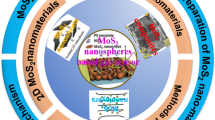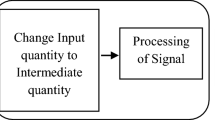Abstract
Contemporary material research is more significant for societal progress. There are several materials accessible in this environment. Among them, certain materials have excellent sensing characteristics for specific gases. According to the literature, two-dimensional materials exhibit unique features that pique the interest of researchers. Molybdenum disulphide (MoS2) is a well-known two-dimensional transition metal dichalcogenide material with exceptional structural and compositional features. These characteristics can be used to detect gases. The effect of MoS2 thickness on nitric oxide gas sensing has been demonstrated in the present work. In the current study, thin films of MoS2 having thicknesses of 20 nm, 40 nm, and 60 nm were deposited by the utilization of radiofrequency (13.56 MHz) sputtering. Scanning electron microscopy and X-ray diffraction were used to study the morphological and structural aspects of the deposited MoS2 films. While these films are examined with nitric oxide, the 60-nm film detects the NO gas with remarkable sensitivity at 40 °C with a response time of 16 s. The results will be discussed.











Similar content being viewed by others
Data availability
Data will be made on request.
Code availability
Not applicable.
References
J. Theerthagiri, R.A. Senthil, B. Senthilkumar, A.R. Polu, J. Madhavan, M. Ashok kumar, J. Solid State Chem. (2017). https://doi.org/10.1016/j.jssc.2017.04.041
Ananya Dey, Mater. Sci. Eng. (2018). https://doi.org/10.1016/j.mseb.2017.12.036
M. Zhang, Z. Yuan, J. Song, C. Zheng, Sen. Actuators B Chem. (2010). https://doi.org/10.1016/j.snb.2010.05.001
T. Anukunprasert, C. Saiwan, E. Traversa, Sci. Technol. Adv. Mater. (2005). https://doi.org/10.1016/j.stam.2005.02.020
A. Gusain, N.J. Joshi, P. Varde, D. Aswal, Sen. Actuators B Chem. (2017) https://doi.org/10.1016/j.snb.2016.07.176
A.S.N. Salami, Sen. Actuators B Chem. (2016). https://doi.org/10.1016/j.snb.2016.06.033
F. Guix, I. Uribesalgo, M. Coma, F. Munoz, Prog. Neurobiol. (2005). https://doi.org/10.1016/j.pneurobio.2005.06.001
J.S. Stamler, Coron. Artery Dis. 10, 273–276 (1999)
Y. Xia, J. Wang, J.L. Xu, X. Li, D. Xie, L. Xiang, S. Komarneni, Appl. Mater. Interfaces (2016) https://doi.org/10.1021/acsami.6b12501
Q.H. Wang, K.K. Zadeh, A. Kis, J.N. Coleman, M.S. Strano, Nat. Nanotechnol 7, 699–712 (2012)
S. Balendhran, S. Walia, H. Nili, J.Z. Ou, S. Zhuiykov, R.B. Kaner, S. Sriram, M. Bhaskaran, K. Kalantar-zadeh, Adv. Funct. Mater. (2013). https://doi.org/10.1002/adfm.201300125
K.F. Mak, C. Lee, J. Hone, J. Shan, and T. F. Heinz Appl. Phys. Letters 105, 136805 (2010)
A. Kumar, A. Sanger, A. Kumar, R. Chandra, RSC Adv. 7, 39666–39675 (2017)
F. Schedin, A.K. Geim, S.V. Morozov, E.W. Hill, P. Blake, M.I. Katsnelson, K.S. Novoselov, Nat. Mater. (2007). https://doi.org/10.1038/nmat1967
S. Sharma, A. Kumar, D. Kaur, A.I.P. Conf. Proc. (2018). https://doi.org/10.1063/1.5032596
T. Delorme, M. Najaf, P. Nasr, World J. Neurosci. (2012). https://doi.org/10.4236/wjns.2012.24036
N. Dossi et al., Lab. Chip. 12, 153–158 (2012)
N. Agbor, J. Cresswell, M. Petty, A. Monkman, Sen. Actuators B Chem. 41, 137–141 (1997)
Z. Gu, Y. Xu, K. Gao, Opt. Lett. (2006) https://doi.org/10.1364/ol.31.002405
G. Pennazza et al., IEEE Sens. J. (2017) https://doi.org/10.1109/JSEN.2017.2784899
B. Liu et al., ACS nano (2014) https://doi.org/10.1021/nn5015215
G. Eranna, B. Joshi, D. Runthala, R. Gupta, Crit. Rev. Solid State Mater. (2004) https://doi.org/10.1080/10408430490888977
S. Ramu et al., Mater. Res. Express 6, 085075 (2019)
B. Radisavljevic, A. Radenovic, J. Brivio et al., Nat. Nanotechnol. (2011). https://doi.org/10.1038/nnano.2010.279
B. Radisavljevic, M.B. Whitwick, Kis, ACS Nano. (2011) https://doi.org/10.1021/nn203715c
G. Du, Z. Guo, S. Wang, R. Zeng, Z. Chen, H. Liu, Chem. Commun. 46, 1106–1108 (2010)
S. Das, M. Kim, J. Lee, W. Choi, Crit. Rev. Solid State Mater. (2014) https://doi.org/10.1080/10408436.2013.836075
S. Zhao, J. Xue, W. Kang, Chem. Phys. (2014) https://doi.org/10.1016/j.cplett.2014.01.043
L. Ottaviano, S. Palleschi et al., J. 2D Mater. (2017). https://doi.org/10.1088/2053-1583/aa8764
D.L.C. Ky, T. Khac, C.T. Le, Friction (2018). https://doi.org/10.1007/s40544-017-0172-8
G. Magda, J. Pető, G. Dobrik et al., Sci. Rep. 5, 14714 (2015)
Y. Huang, Y.H. Pan, R. Yang et al., Nat. Commun. (2020). https://doi.org/10.1038/s41467-020-16266-w
Kyle DiCamillo,Sergiy Krylyuk, WShi Davydov Albert., M. Paranjape, IEEE Trans. Nanotechnol. (2019). https://doi.org/10.1109/TNANO.2018.2868672
Hammad ul Hassan, Jihun Mun,Byung Soo Kang, J.Y. Song, J. R Soc. Chem. (2016). https://doi.org/10.1039/C6RA10132A
Y.-H. Lee, X.-Q. Zhang et al., J. Adv. Mater. (2012). https://doi.org/10.1002/adma.201104798
H. Xinsheng Wang, Y. Feng, Wu, Liying, Jiao, J. Am. Chem. Soc. (2013). https://doi.org/10.1021/ja4013485
Fu. Deyi et al., J. Am. Chem. Soc. (2017). https://doi.org/10.1021/jacs.7b05131
A. Siddhartha Dam, A.G. Thakur, S. Hussain, Thin Solid Films. (2019) https://doi.org/10.1016/j.tsf.2019.04.041
H.-S. Kim, M.D. Kumar, J. Kim, D. Lim, Sens. Actuator A Phys. (2018). https://doi.org/10.1016/j.sna.2017.11.050
M.R. Wu, W.Z. Li, C.Y. Tung et al., Sci. Rep. (2019). https://doi.org/10.1038/s41598-019-43752-z
B. Cho, M. Hahm, M. Choi et al., Sci. Rep. (2015). https://doi.org/10.1038/srep08052
A. Shokri, N. Salami, Sen. Actuators B Chem. (2016). https://doi.org/10.1016/j.snb.2016.06.033
A. Mantarcı, M. Kundakçi, Opt. Quant. Electron. (2019) https://doi.org/10.1007/s11082-019-1795-y
P.R. Nair, M.A. Alam, IEEE Trans. Electron. Devices. (2007) https://doi.org/10.1109/TED.2007.909059
G. Korotcenkov, Mater. Sci. Eng. B (2007) https://doi.org/10.1016/j.mseb.2007.01.044
M. Donarelli, S. Prezioso, F. Perrozzi, F. Bisti, M. Nardone, L. Giancaterini, C. Cantalini, L. Ottaviano, Sen. Actuators B Chem. (2015). https://doi.org/10.1016/j.snb.2014.10.099
S. Kaur, S. Kailasaganapathi et al., Appl. Surf. Sci. (2017). https://doi.org/10.1016/j.apsusc.2016.10.085
Acknowledgements
I want to thank Dr. D.N.N. Murty, Associate Professor, HOD Electrical Department, IIT Tirupati, for giving permission to utilize equipment needed to complete the experimental work.
Funding
The authors declare that no funds, grants, or other support was received during the preparation of this manuscript.
Author information
Authors and Affiliations
Contributions
PK, AKK, YRK, VRKRD did conceptualization. PK, AKK, YRK, VRKRD performed methodology, formal analysis and investigation, writing—original draft preparation, and writing—review and editing. AKK and VRKRD supervised the study.
Corresponding author
Ethics declarations
Competing Interests
The authors have no relevant financial or non-financial interests to disclose.
Ethics approval
Not applicable.
Consent to participate
Not applicable.
Consent for publication
Not applicable.
Additional information
Publisher’s Note
Springer Nature remains neutral with regard to jurisdictional claims in published maps and institutional affiliations.
Rights and permissions
Springer Nature or its licensor (e.g. a society or other partner) holds exclusive rights to this article under a publishing agreement with the author(s) or other rightsholder(s); author self-archiving of the accepted manuscript version of this article is solely governed by the terms of such publishing agreement and applicable law.
About this article
Cite this article
Korapati, P., Kumari, A.K., Kosuri, Y.R. et al. Influence of MoS2 film thickness for nitric oxide gas sensing applications. J Mater Sci: Mater Electron 34, 72 (2023). https://doi.org/10.1007/s10854-022-09432-x
Received:
Accepted:
Published:
DOI: https://doi.org/10.1007/s10854-022-09432-x




